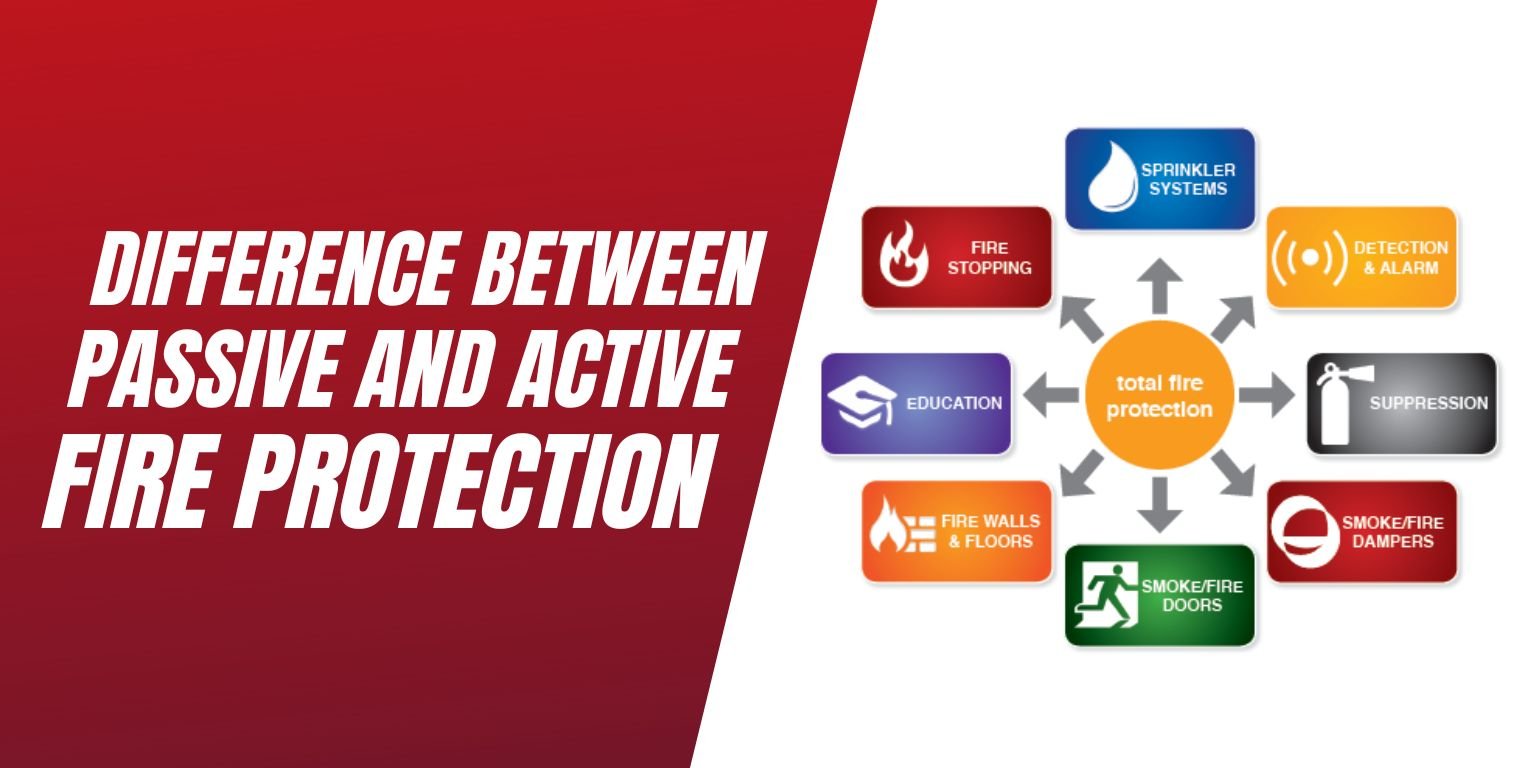
As a facility manager, when someone asks about your building’s fire protection system, you probably think about its alarm and sprinkler systems when, in reality, it is much more. In fact, there are two types of fire protection systems, Active Fire Protection and Passive Fire Protection. It’s important that both systems are properly working in the event of a fire. Active and passive fire protection systems are meant to work together during a fire, not one in place of the other.
Active vs. Passive Fire Protection
Do you know the difference between Active and Passive Fire Protection? There tends to be some confusion about which is which, so here is a quick reminder:
Active Fire Protection (AFP) – is a group of systems that require some amount of action in order to work efficiently in the event of a fire. These actions may be manually operated, like a fire extinguisher or automatic, like a fire alarm or sprinkler. So, when fire and smoke is detected in a facility, a fire/smoke alarm will alert those who are inside the building, while the sprinkler system actively works to put out or slow the fire. Once firefighters arrive, they use fire extinguishers and fire hoses to put out the fire altogether. So, if your facility has a strong active fire protection system in place, why does passive fire protection matter?
- Sprinklers don’t always work as designed
- Lack of maintenance
- Tampering
- System malfunctions
- Problems with water supply (frozen pipes)
- Inadequate water pressure
Passive Fire Protection (PFP) – is a group of systems that compartmentalize a building through the use of fire-resistance rated walls and floors, keeping the fire from spreading quickly and providing time to escape for people in the building. Fire / smoke dampers are used in a facilities ducts to prevent the spread of fire/smoke throughout the building’s ductwork system. Fire doors help compartmentalize a building, while giving its occupants means of escape. Fire walls / barriers help separate the building into compartments to stop the spread of fire/smoke from room to room. For building with multiple floors, Photoluminescent egress path markers help light the way to safety in dark and smoky stairwells. Passive fire protection is designed to prevent smoke, toxic gases, and fire from spreading; and by compartmentalizing fire, passive fire protection systems:
- Strengthen the effectiveness of active systems
- Facilitate occupant evacuation
- Protect property
- Minimize property damage
Active and passive fire protection systems, although different, are important to a building’s overall fire safety. AFP uses systems that take action in putting out the fire, while PFP uses systems that help prevent the spread of fire and smoke. Just because one is working doesn’t mean you should ignore the other, or that one is more important than the other. AFP takes action in putting out the fire, but may not always work properly. Especially during winter, sprinklers often fail due to frozen pipes, roads could become icy, and hydrants could freeze, which all delays a firefighter’s job and let’s the fire grow. PFP compartmentalizes a building into smaller sections to prevent the spread of fire and smoke throughout the building, while also providing occupants more time for evacuation. However, it doesn’t put out the fire altogether, it just helps contain it to one location. Therefore, to ensure that a building has total fire protection, both AFP and PFP should be working together in unison.
Fire and Life Safety Services Team
LSS Life Safety Services® (LSS) is the industry leader in passive fire protection inspection and repair services. After all, with nearly twenty years of experience serving commercial facilities, LSS is a proven leader among facility safety service companies.
- Fire/Smoke Damper Inspection & Maintenance
- Fire Door Inspection & Maintenance
- Firestop Survey & Installation / Above Ceiling
- Fireproofing
- Life Safety and Environment of Care Consulting
- Photoluminescent Egress Path Markers & Exit Signage
Contact Us Here or call us at 888-675-4519

